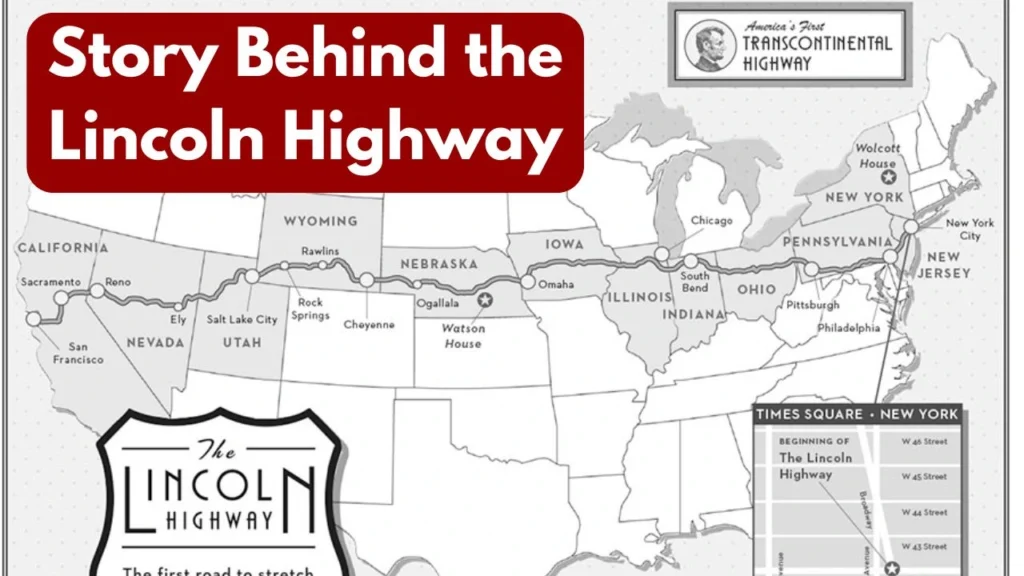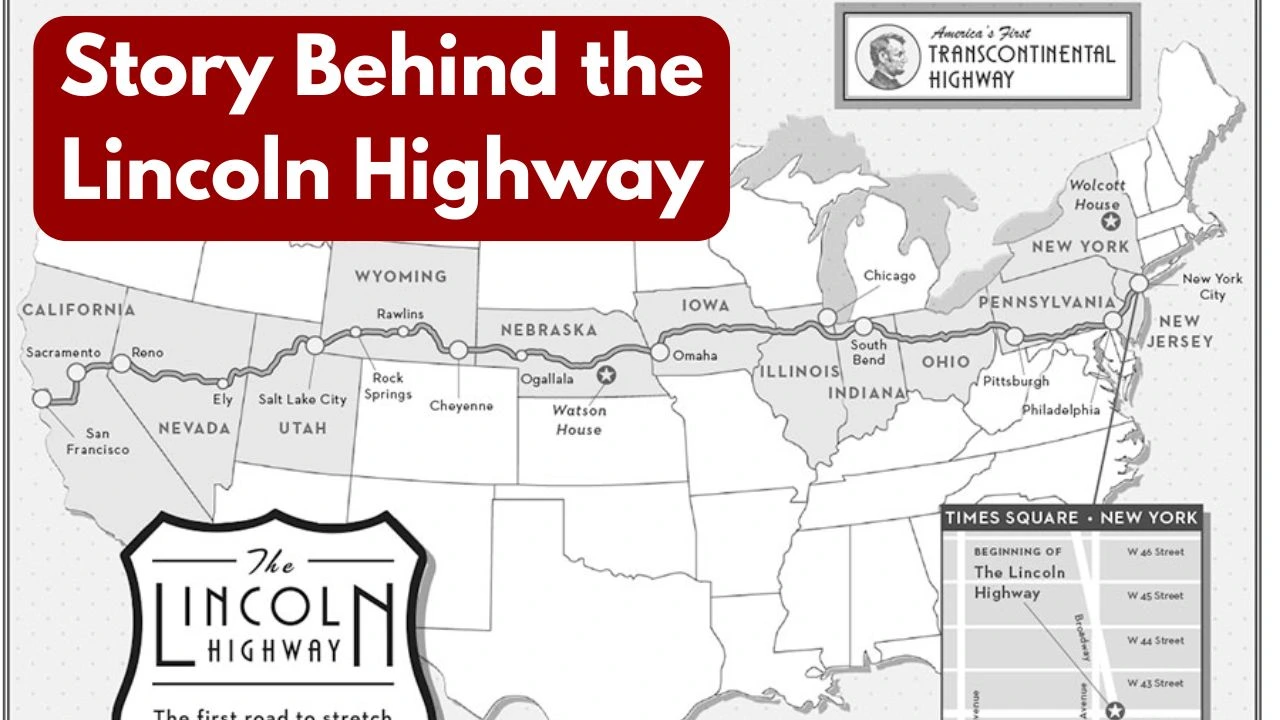Carl G. Fisher came up with the idea for the Lincoln Highway in 1912, with the goal of building a continuous paved route from New York City to San Francisco. It was the first transcontinental road in the United States. Originally intended to be finished in time for the Panama-Pacific International Exposition in 1915, it was a privately sponsored project. Although the route is no longer formally known by that name since it has been replaced by the Interstate and U.S. highway systems, it is, however, an intriguing aspect of American history that exemplifies the development of car travel and inspires a road trip culture. This article talks about the Story Behind the Lincoln Highway; therefore, read further to learn about America’s First Transcontinental Road.

The Story Behind the Lincoln Highway
Within the United States, the Lincoln Highway was one of the first transcontinental routes and one of the first roads specifically built for cars. Originally conceived by Carl G. Fisher, an Indiana businessman, in 1912, the Lincoln Highway was officially dedicated on October 31, 1913. It stretches from Times Square in New York City west to Lincoln Park in San Francisco. The original route passed through 13 states, including California, Pennsylvania, New Jersey, Ohio, Indiana, Utah, Illinois, Nebraska, Iowa, Colorado, Nevada, Wyoming, and New York. In 1915, the “Colorado Loop” was eliminated, and in 1928, the Lincoln Highway was rerouted to pass through the northern state of West Virginia. Thus, at some point in its existence, the highway travelled through more than 700 cities, towns, and villages spread throughout 14 states and 128 counties.
Birth of the Lincoln Highway
- The nation’s first national homage to President Abraham Lincoln was the Lincoln Highway, which was dedicated nine years before the Lincoln tribute in Washington, D.C., was dedicated in 1922.
- As the nation’s first automobile highway, the Lincoln Highway significantly increased the wealth of the hundreds of towns, cities, and villages it crossed.
- One affectionate nickname for the Lincoln Highway was “The Main Street Across America.”
- Carl Fisher, founder of the Indianapolis Motor Speedway, wanted to create a coast-to-coast highway to showcase the potential of automobiles and improve road infrastructure.
- Lincoln Highway Association (LHA) was founded by Fisher and Henry Joy, head of the Packard Motor Car Company.
- The LHA chose the name “Lincoln Highway” to honour Abraham Lincoln, and the highway was formally dedicated on October 31, 1913.
Lincoln Highway: Construction and Challenges
- The Lincoln Highway was approximately 3,389 miles long, passing through 13 states and over 700 cities, towns, and villages.
- Construction was slow due to a lack of funding and infrastructure, with many sections remaining unpaved.
- The highway followed existing roads and trails, including historic routes like the Mormon Trail and the Overland Stage Line.
What made up the Impact and Legacy of the Lincoln Highway?
- The Lincoln Highway played a significant role in promoting good roads and inspiring the development of the U.S. highway system.
- Other named routes, including the Dixie Highway and the Yellowstone Trail, were created as a result of the highway’s success.
- The Lincoln Highway Association’s efforts contributed to the passage of the Federal Aid Highway Act of 1921, which provided funding for highway construction.
- The highway also influenced the development of the Interstate Highway System, with President Dwight D. Eisenhower drew influence from his experiences on the German autobahn system and the Lincoln Highway.
Preservation and Commemoration of the Lincoln Highway
To honour the highway’s history, the Lincoln Highway Association was reorganised in 1992. Many sections of the original highway have been preserved and marked with historic markers and monuments. The Lincoln Highway remains an important part of American history, symbolising the country’s transition from railroads to automobiles and the development of modern road infrastructure. The following preservation and commemoration of the Lincoln Highway were considered:
- Concrete Markers: Restoring and maintaining original markers.
- Historic Site Preservation: Protecting buildings, motels, and gas stations.
- Museums and Archives: Preserving artefacts and history.
- Community Engagement: Volunteers and local communities promoting the highway’s legacy.
- Legislative Support: Government recognition and support for preservation efforts.
FAQs On Lincoln Highway History
- Who conceived the Lincoln Highway?
- In 1912, Indiana businessman Carl Fisher came up with the idea for the Lincoln Highway.
- Why was it named the Lincoln Highway?
- It was named to honour Abraham Lincoln.
- How long was the Lincoln Highway?
- The distance between New York City and San Francisco is roughly 3,389 miles.
- What impact did the Lincoln Highway have?
- It promoted good roads, inspired highway development, and contributed to the creation of the U.S. highway system.
